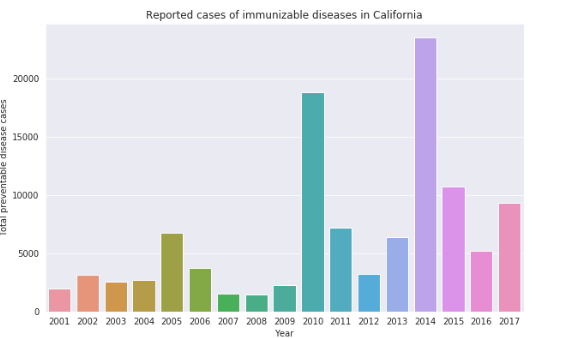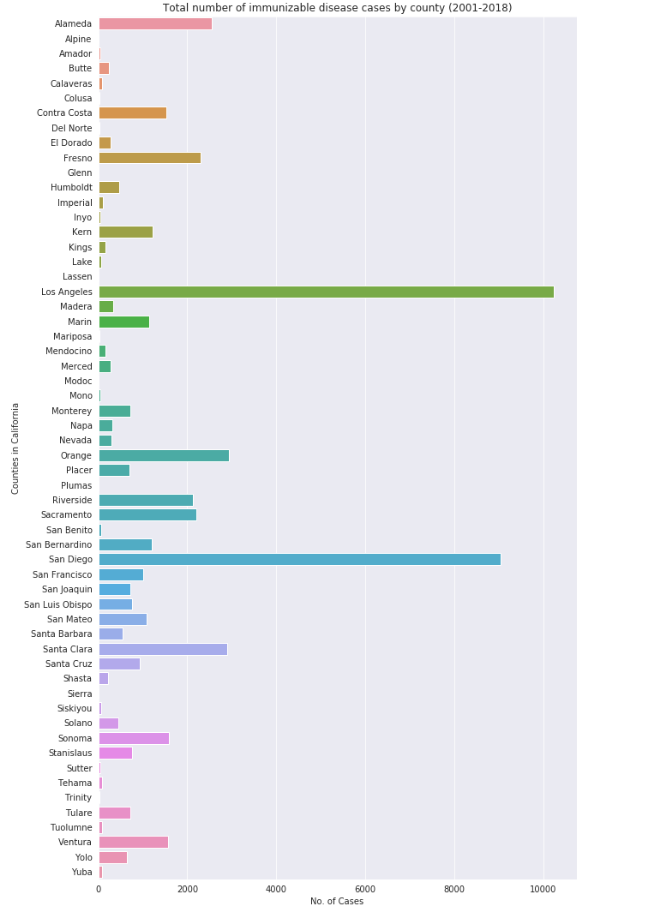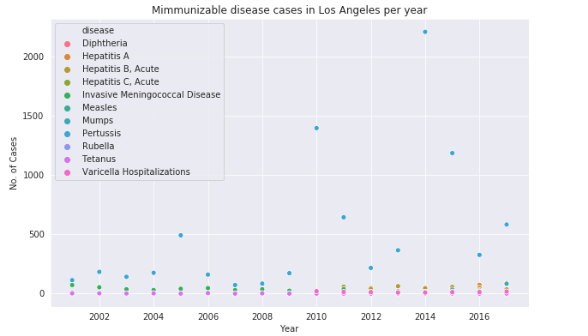Immunizable Diseases
Immunizable diseases are the diseases that have known and effective vaccines. During this time of the novel COVID-19 crisis. I thought It’d be interesting to look at historical outbreaks of other known pathogens. I chose California for two reasons: the foremost being, it had the most updated complete publicly available dataset I could easily get my hands on. The second reason; is because california is similar to a small country unto its own. In many ways it can be treated as a simulation of what other states will encounter if they follow the same socio-economic trends.
Data Mining Op.
I got my dataset from the California Department of Public Health and my python scripts can be found on github. I used numpy, pandas, seaborn and matplotlib for this data mining operation.
Total Cases
Clearly, the total number of cases is on an upward trend. However, it seems to exhibit a pattern of a small bathtub curve with an increasingly periodic frequency. Meaning the magnitude of the cases are increasing. As though; an outbreak happens, an effort to control the outbreak occurs and then it happens again. The concerning part is that the cases increase for each new cycle.
This could be due to a variety of factors. Perhaps, population growth. There could be more people moving to California. This would result in more cases reported. However, it might not mean that the overall percentage of the infected population is increasing. The percentage of infected population per outbreak, could be the same or decrease. We really can’t tell. All we really know is that California keeps having more cases of immunizable diseases reported, and that’s it.

County
It’s clear from the plot below that the most dense places in California are the ones with the most cases. Perhaps since the population is more dense the diseases spread quicker. Or, maybe the majority of the anti-vaccine groups are clustered in these areas. These are all interesting theories that should be researched more before any causality is presumed

Diseases
This last plot is the most interesting to me. I’ll admit the colors aren’t great. However, you can clearly see that Pertussis (whooping cough) is on a historic rise. This is concerning regardless of population growth or other factors that might contribute. Pertussis is highly contagious and it kills babies very easily, and those little human’s can’t get the vaccine until they are three months old. If they contract Pertussis before that there is no treatment, only a vaccine. Meaning, they can’t just take some antibiotics and then it will clear up. They have no protection until they’re vaccinated.

Conclusion
In conclusion, data mining is fun and intriguing. It often leaves me with more questions than answers. No definite conclusions should be made after data mining. Trends should be noted and then experiments should be started to gather more data. Get your vaccinations!
Thumbnail and banner art sourced from Yuvraj Jha